Europe Prefab Wood Buildings Market Size
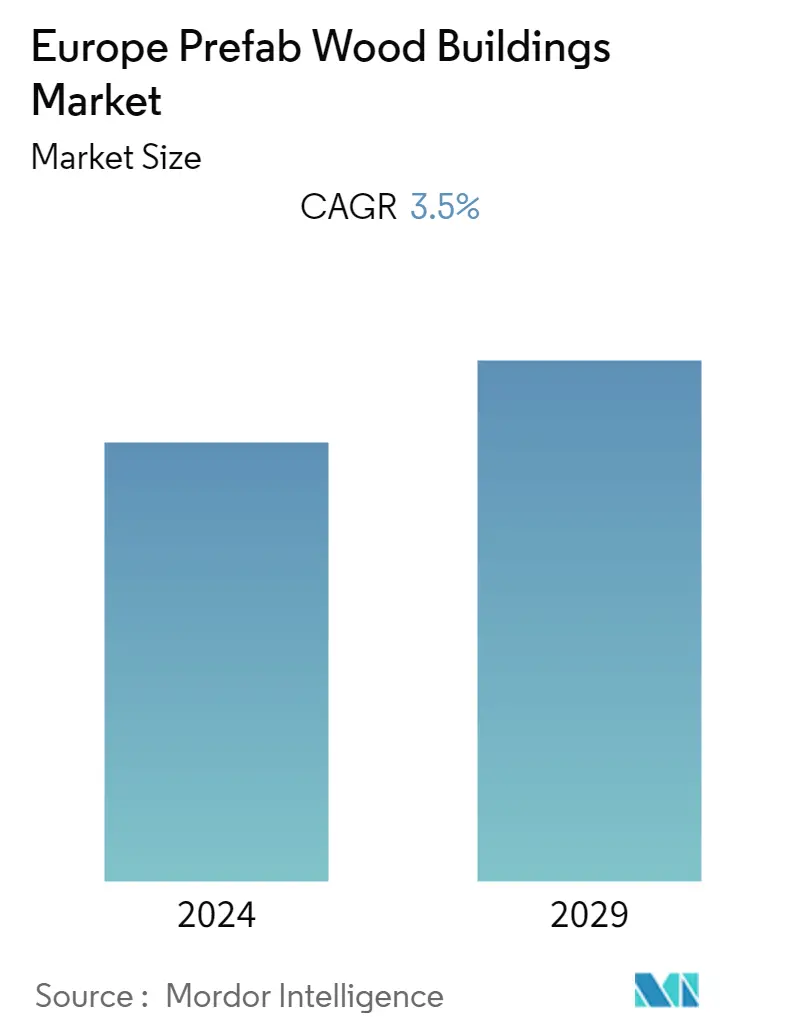
| Study Period | 2020 - 2029 |
| Base Year For Estimation | 2023 |
| Forecast Data Period | 2024 - 2029 |
| Historical Data Period | 2020 - 2022 |
| CAGR | 3.50 % |
| Market Concentration | Medium |
Major Players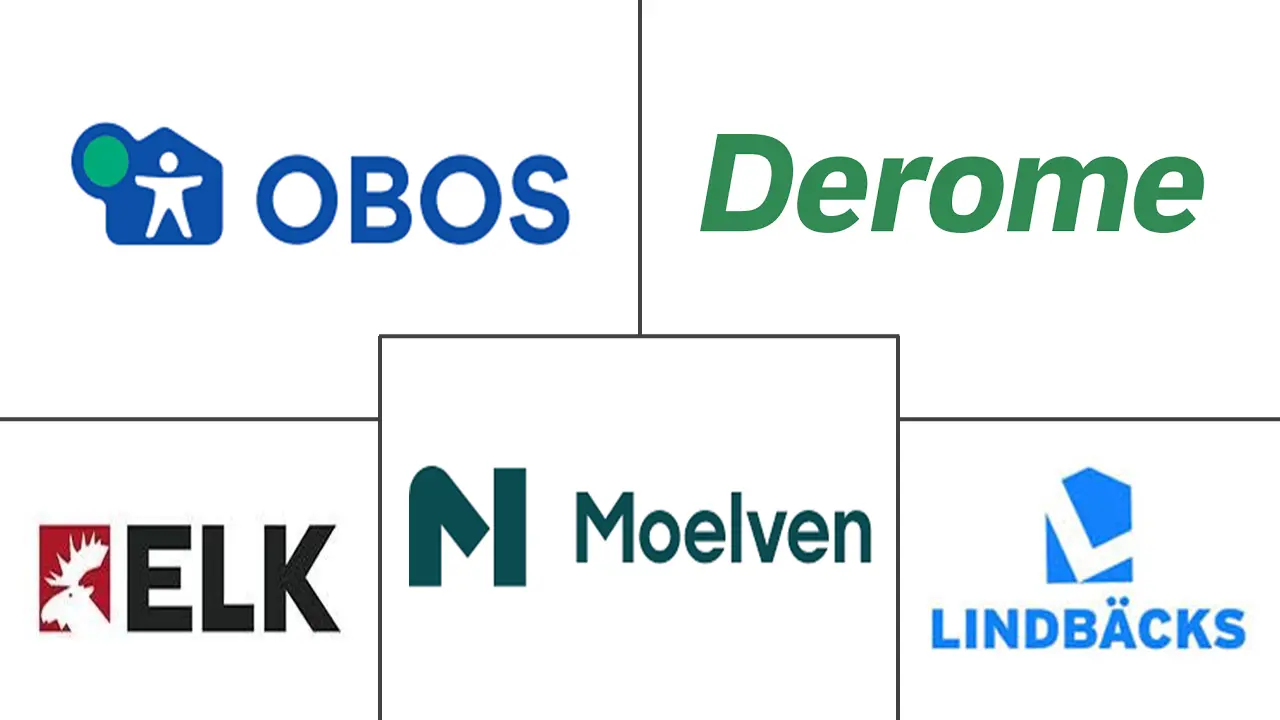
*Disclaimer: Major Players sorted in no particular order |
Europe Prefab Wood Buildings Market Analysis
- The European Prefabricated Wood Buildings Market is valued at about USD 17.5 billion and is expected to register a CAGR of more than 3.5% during the forecast period. The outbreak of the COVID-19 pandemic has led to severe uncertainty for vendors and contractors in the construction industry across Europe. Several construction companies shut down their projects due to lockdowns and restrictions. However, due to immediate requirements for hospitals and quarantine sectors, the demand for prefabricated materials witnessed an increase. Since a high workforce is required for traditional construction, opting for prefabricated buildings became an optimum solution during the pandemic.
- The industry for prefabricated construction is anticipated to benefit greatly from the usage of additive manufacturing in Europe. Eco-friendly manufacturing processes and materials are used by businesses to set their products apart from their rivals.
- The emphasis on energy efficiency has prompted the use of materials that absorb energy, including micro houses. Another important factor fueling market expansion in the region, particularly in Switzerland, the Nordic countries and others, is the introduction of turnkey solutions. Europe's prefabricated building sector is dominated by Germany, the Nordic region.
- Since humans have been using wood for thousands of years, wooden architecture is now made easier by digital manufacturing and computational design technologies. This makes it possible for architects and engineers to create ever more intricate and effective timber structures.
- According to research from Sweden, wood structures are 16% less expensive than concrete ones, and because of their light weight and increased precision, they may be built up to 20% faster.
- In addition, compared to steel and concrete, the production and construction of wood frames generate 40% less waste: Steel buildings (which often have concrete floors) normally have a mass of about 160kg/m3, whereas concrete buildings typically have a bulk density of around 300kg/m3, and a timber building with timber flooring may have a mass of only a little over 70kg/m3 which could be assembled onsite effortlessly.
Europe Prefab Wood Buildings Market Trends
National Urban Redevelopment Projects in Ukraine and Turkey
The vast infrastructure projects in war-torn Ukraine and earthquake-stricken Turkey will present considerable chances for significant players in the European prefabricated construction sector.
A 7.8-magnitude earthquake that struck Turkey and Syria on February 6, 2023, killed tens of thousands of people and badly damaged infrastructure in towns and cities on both sides of the fault line. The president of Turkey declared a substantial construction program to restore cities with safety and sustainability.
According to analysts, the post-quake urban renewal in Türkiye would offer enormous potential for the building industry and other allied businesses, with an expected investment of more than USD 250 billion.
Construction and related businesses should benefit financially from significant rebuilding and recovery projects in Ukraine and Turkey. The market for prefabricated buildings in Europe is thus anticipated to increase from 2023 to 2029 and beyond.
Russia has been at war with Ukraine for more than a year at this point. As a result, Ukraine's infrastructure has suffered significant damage. The cost of Ukraine's rehabilitation and recovery was estimated by the Ukrainian government, the European Commission, the World Bank, and its partners to be around USD 350 billion in September 2022. The price is expected to rise as the fight goes on. Türkiye would offer enormous potential for the building industry and other allied businesses,
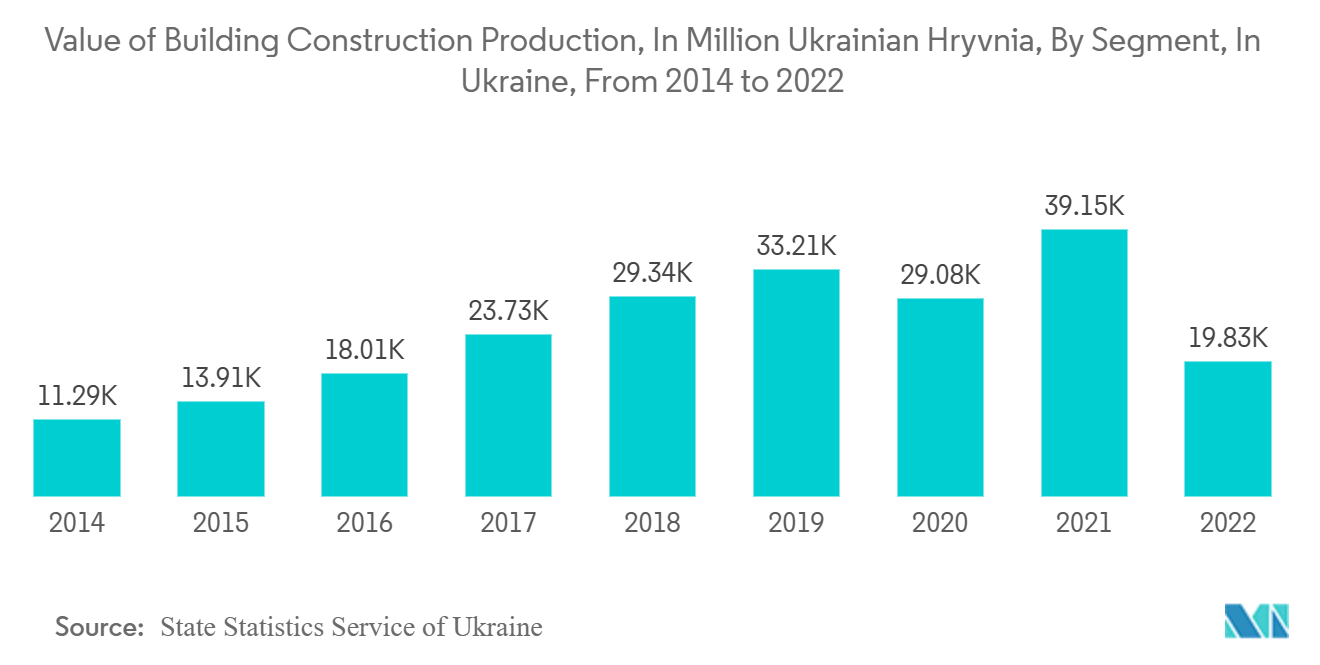
Increasing Investments in UK Prefab Industry Could Boost the Market
Modular construction is gaining popularity across the European region, owing to population growth and shortages in housing. It is gaining momentum as an effective means to build affordable housing. The number of modular homes being constructed is growing in the country and the top construction companies, investors, and developers in the country are looking for prefabricated housing solutions. The increasing investments in the UK's modular construction sector are also boosting the growth of the prefab industry.
The structure of the housebuilding industry in the United Kingdom has also been a challenge in addressing the demand in the housing sector. Small-to-medium-sized housebuilders are facing problems from the banks to get loans. This factor and the rising land values and inflation in construction costs prevent new companies from entering the market. However, the rise of modular construction, with its reduced costs and build times, is allowing smaller housebuilders to enter the market. Modular construction is acting as an enabler, offering easier entry into housebuilding for new developers. There are fewer errors and costly disruptions in Precision-engineered homes.
The country's infrastructure pipeline currently has a budget of over USD 745 billion over the next decade, with around USD 55 billion being for housing. Residential construction is expected to grow, with the government announcing a housing stimulus package worth USD 19 billion distributed up to 2023. The USD 37 million investment, split into a USD 18.5 million mezzanine and USD 18.5 million senior facilities, comes from Homes England's USD 6 billion Home Building Fund. The investment follows a deal for Ilke to provide 750 homes for northern housing giant Places for People.
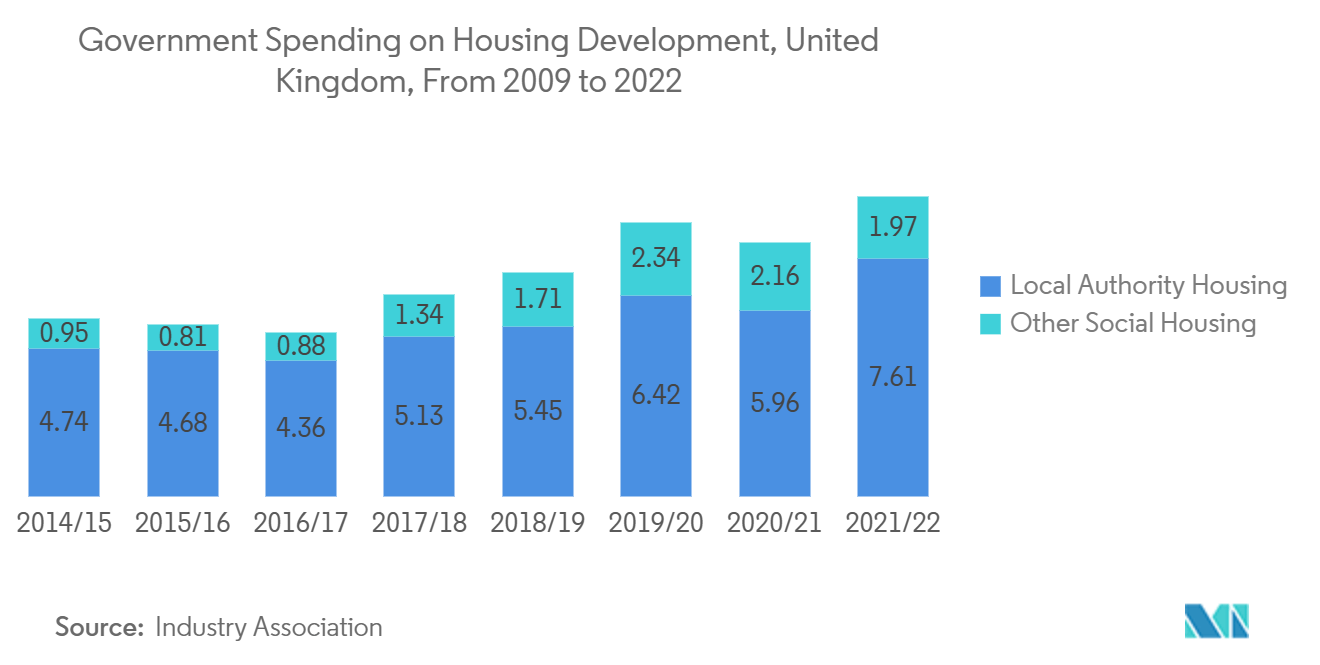
Europe Prefab Wood Buildings Industry Overview
The report covers the major players operating in the European prefabricated buildings industry. The market is highly competitive with few major players. The market is moderately fragmented, and the market is expected to grow during the forecast period due to the increase in prefab construction building investments and upcoming major projects in the country, and other few factors are driving the market.
Europe Prefab Wood Buildings Market Leaders
-
OBOS Bostadsutveckling AB
-
Derome Husproduktion AB
-
Lindbacks Bygg AB
-
Moelven Byggmodul AB
-
ELK Fertighaus GmbH Zweigniederlassung Dtl.
*Disclaimer: Major Players sorted in no particular order
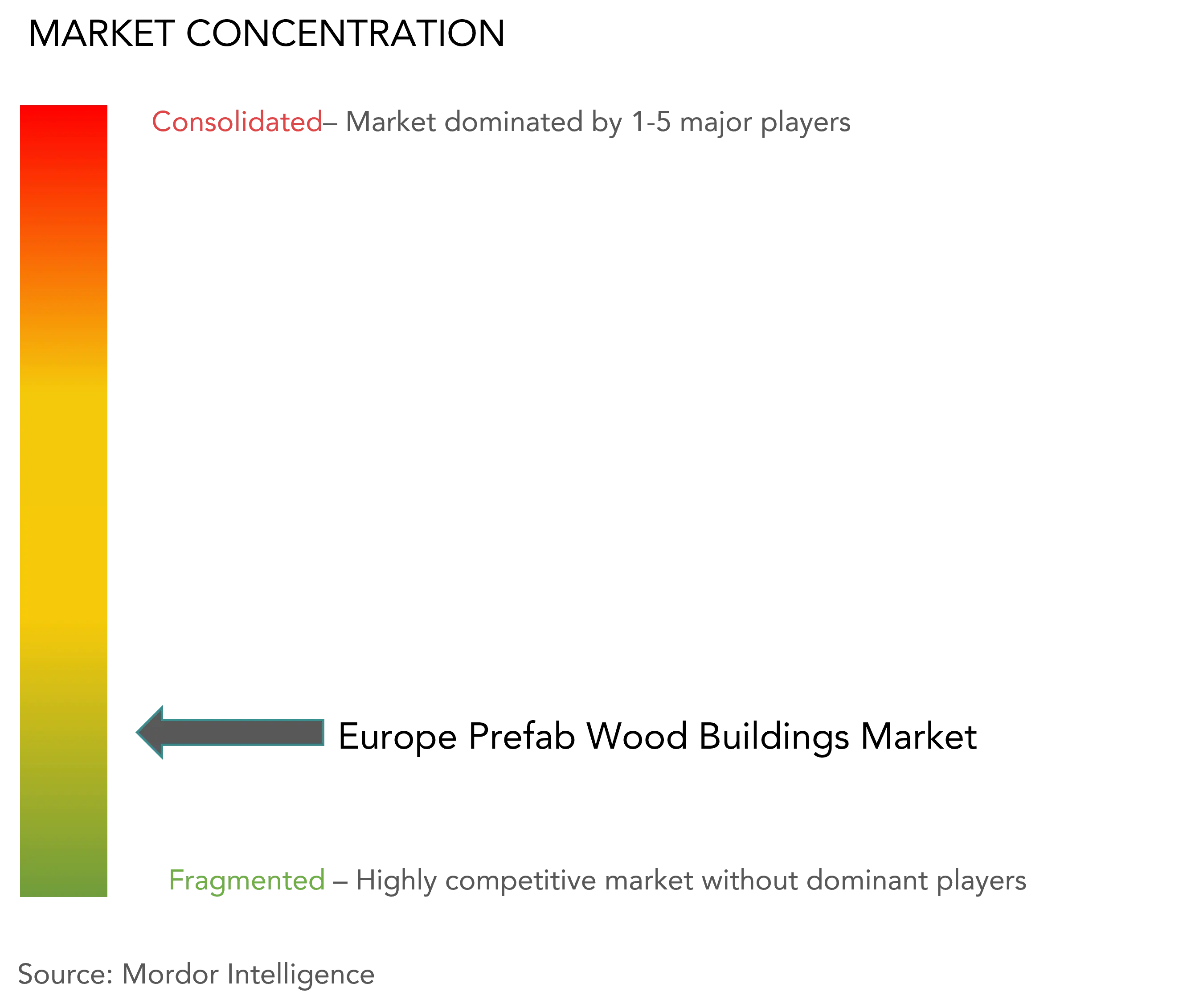
Europe Prefab Wood Buildings Market News
- June 2022: Ardmac, a leader in modular building, has purchased Cental. Modular assembly and full modular buildings will be considerably more prevalent in the future construction environment, which will have a more standardised, consolidated, and integrated construction process.This acquisition takes Ardmac one step closer to that goal. Ardmac's strengths as a top provider of offsite modular solutions to its clients in the data centre, pharmaceutical, healthcare, and advanced manufacturing sectors are enhanced by the combined experience and resources, and new options are now available to clients in the commercial fit out sector.
- April 2022: HusCompagniet A/S has signed a contract to purchase a prefabricated factory from NVV GmbH and JAWS Holding ApS, along with an order book worth about DKK 200 million(USD 291 Million). Esbjerg, Denmark is home to the factory. The facility is one of the most automated in the Nordic region, and HusCompagniet's strategic goals will be further strengthened by its entry into this area of the Danish supply chain. With the newly acquired facility, HusCompagniet can assure production in their expanding semi-detached segment and avoid supply chain difficulties involving both subcontractors and specific materials.
Table of Contents
1. INTRODUCTION
1.1 Study Background
1.2 Study Assumption and Market Definition
2. RESEARCH METHODOLOGY
3. EXECUTIVE SUMMARY
4. MARKET INSIGHTS & DYNAMICS
4.1 Market Overview
4.2 Market Dynamics
4.2.1 Market Drivers
4.2.2 Market Restraints
4.2.3 Opportunities
4.3 Industry Attractiveness - Porter's Five Forces Analysis
4.3.1 Threat of New Entrants
4.3.2 Bargaining Power of Buyers/Consumers
4.3.3 Bargaining Power of Suppliers
4.3.4 Threat of Substitute Products
4.3.5 Intensity of Competitive Rivalry
4.4 Industry Supply Chain / Value Chain Analysis
4.5 Technological Innovations in the Market
4.6 Government Regulations and Initiatives in the Industry
4.7 Insights into Rental Yields in the Segment
4.8 Cost Structure Analysis of the Prefabricated Buildings Industry
4.9 Brief on Different Structures Used in the Prefabricated Buildings Industry
4.10 Impact of the COVID-19 on the Market
5. MARKET SEGMENTATION
5.1 By Application
5.1.1 Residential (Single Family Residential, Multi-family Residential)
5.1.2 Commercial (Office, Hospitality, etc.)
5.1.3 Other Applications (Infrastructure and Industrial)
5.2 By Panel Systems
5.2.1 Cross-Laminated Timber (CLT) Panels
5.2.2 Nail-Laminated Timber (NLT) Panels
5.2.3 Dowel-Laminated Timber (DLT) Panels
5.2.4 Glue-Laminated Timber (GLT) Columns and Beams
5.3 By Geography
5.3.1 Belgium
5.3.2 Finland
5.3.3 France
5.3.4 Germany
5.3.5 Italy
5.3.6 Russia
5.3.7 Spain
5.3.8 Sweden
5.3.9 United Kingdom
5.3.10 Rest Of Europe
6. COMPETITIVE LANDSCAPE
6.1 Market Concentration Overview
6.2 Company Profiles
6.2.1 OBOS Bostadsutveckling AB
6.2.2 Peab AB
6.2.3 Derome Husproduktion AB
6.2.4 Lindbacks Bygg AB
6.2.5 Moelven Byggmodul AB
6.2.6 Swietelsky AG
6.2.7 ELK Fertighaus GmbH Zweigniederlassung Dtl.
6.2.8 Gotenehus AB
6.2.9 DFH Group
6.2.10 Laing O'Rourke
6.2.11 Romakowski GmbH & Co. KG
6.2.12 Vastkuststugan AB
6.2.13 Trivselhus AB
6.2.14 Alvsbyhus AB
6.2.15 Moelven Byggmodul AS
6.2.16 Anebyhusgruppen AB
6.2.17 Fertighaus Weiss GmbH
6.2.18 LB-Hus AB*
- *List Not Exhaustive
7. FUTURE OF THE MARKET
8. APPENDIX
Europe Prefab Wood Buildings Industry Segmentation
A prefabricated building is a building or part of a building that has been manufactured in advance and can be easily transported and assembled.
The European prefabricated buildings market covers growing trends and projects like commercial, residential, and industrial construction. The market scope has been extended to provide insights at the regional level by segmenting across geography. Along with the report's scope, it also analyzes the key players and the competitive landscape in the market. The impact of COVID-19 has also been incorporated and considered during the study.
The Europe Prefab Wood Building Market is segmented By Panel Systems (Cross-laminated timber (CLT) panels, Nail-laminated timber (NLT) panels, Dowel-laminated timber (DLT) panels, and Glue-laminated timber (GLT) columns and beams), By Application (Single Family Residential, Multi-family Residential, Office, Hospitality, and Others) and By Geography (Belgium, Finland, France, Germany, Italy, Russia, Spain, Sweden, United Kingdom, and Rest Of Europe). The report offers market size and forecasts for The Europe Prefab Wood Building Market in value (USD Billion) for all the above segments.
| By Application | |
| Residential (Single Family Residential, Multi-family Residential) | |
| Commercial (Office, Hospitality, etc.) | |
| Other Applications (Infrastructure and Industrial) |
| By Panel Systems | |
| Cross-Laminated Timber (CLT) Panels | |
| Nail-Laminated Timber (NLT) Panels | |
| Dowel-Laminated Timber (DLT) Panels | |
| Glue-Laminated Timber (GLT) Columns and Beams |
| By Geography | |
| Belgium | |
| Finland | |
| France | |
| Germany | |
| Italy | |
| Russia | |
| Spain | |
| Sweden | |
| United Kingdom | |
| Rest Of Europe |
Frequently Asked Questions
What is the current Europe Prefab Wood Buildings Market size?
The Europe Prefab Wood Buildings Market is projected to register a CAGR of 3.5% during the forecast period (2024-2029)
Who are the key players in Europe Prefab Wood Buildings Market?
OBOS Bostadsutveckling AB, Derome Husproduktion AB, Lindbacks Bygg AB, Moelven Byggmodul AB and ELK Fertighaus GmbH Zweigniederlassung Dtl. are the major companies operating in the Europe Prefab Wood Buildings Market.
What years does this Europe Prefab Wood Buildings Market cover?
The report covers the Europe Prefab Wood Buildings Market historical market size for years: 2020, 2021, 2022 and 2023. The report also forecasts the Europe Prefab Wood Buildings Market size for years: 2024, 2025, 2026, 2027, 2028 and 2029.
Europe Prefab Wood Buildings Industry Report
Statistics for the 2024 Europe Prefab Wood Buildings market share, size and revenue growth rate, created by Mordor Intelligence™ Industry Reports. Europe Prefab Wood Buildings analysis includes a market forecast outlook to for 2024 to 2029 and historical overview. Get a sample of this industry analysis as a free report PDF download.

